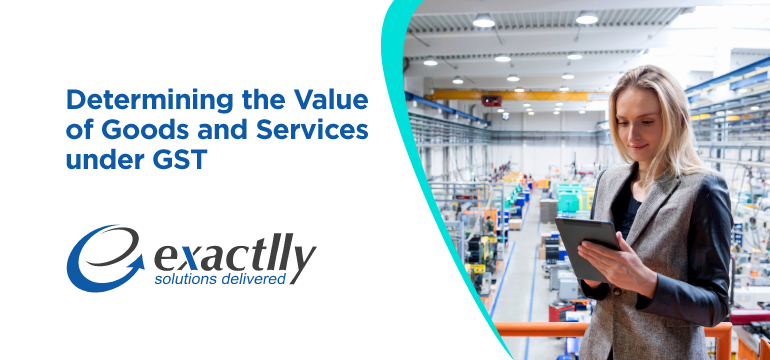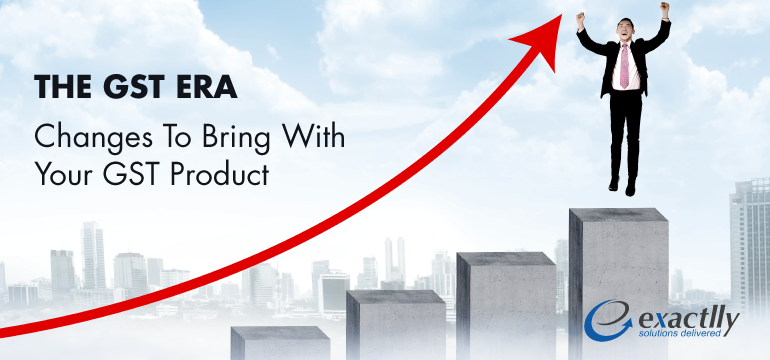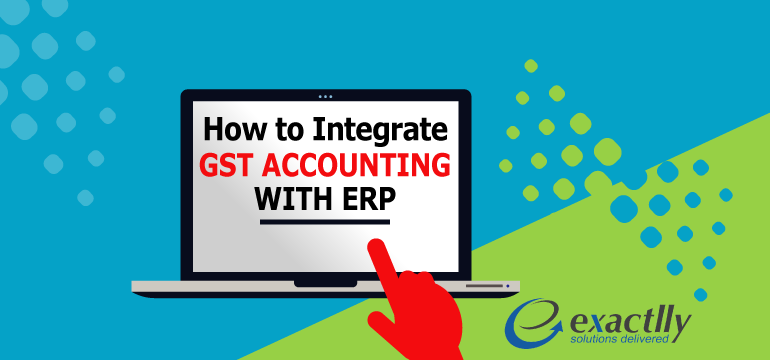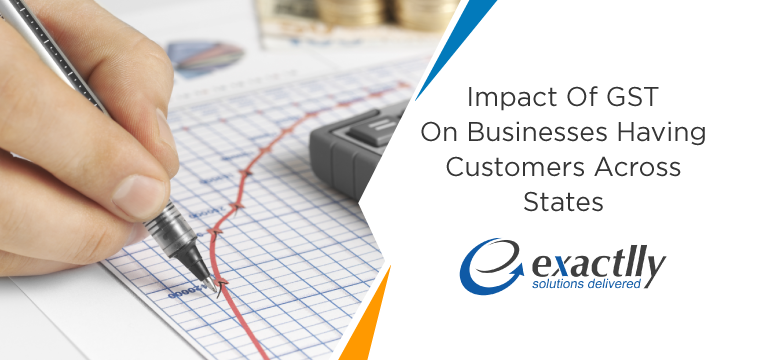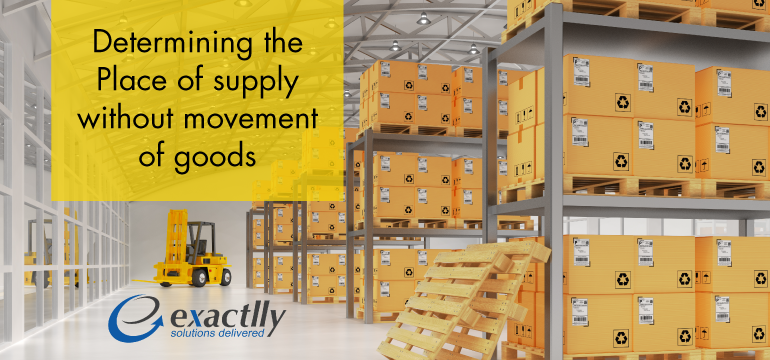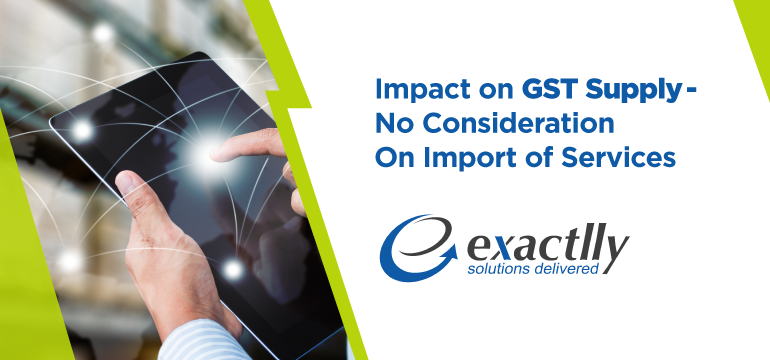Impact of GST on Major Industry Verticals in India
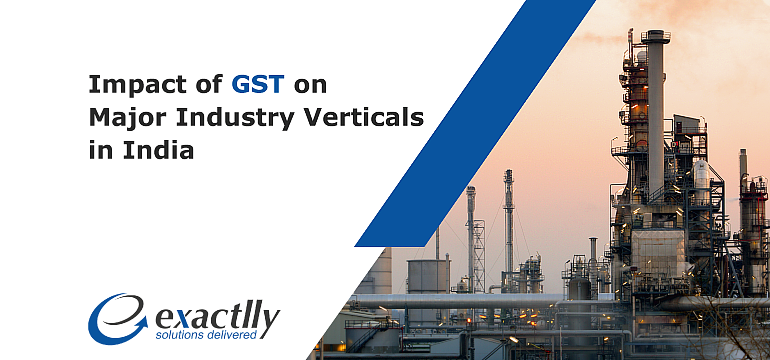
Is the GST a boon or a bane? Is it going to affect you greatly or benefit you in a positive way? What is the tangible impact of GST? The GST reform has transformed the nation by sweeping dust under the carpet and ironing out the kinks in the tax system in the country. The unified tax system aims to subsume all the various taxes and duties levied on various supplies across the nation and hopes to convert the nation into a single marketplace.
The GST has sunk its claws into all the possible sectors of the economy, with an objective to reform it while ensuring that corrupt practices such as tax evasion, unaccounted information and executing transactions under the radar are done away with.
Impact of GST on Major Industries and further effect on Consumers :
-
Seeds Industry –
The agricultural sector consists of a major dependent sector in India and it contributes greatly to the overall gross domestic product of the nation. Pulses and grains have not been included under the GST however oilseeds have been brought under the ambit of the tax at 5%.
Nonetheless, oilseeds that are used for the purpose of seeds are exempt from the levy; nonetheless, oilseed manufacturers are in a fix as they expected the rate to be at par with the erstwhile regime, i.e., nil.
-
Iron & Steel –
The iron & steel industries form the backbone of our nation and are used in both the construction and manufacturing as well as post construction markets. Under the erstwhile tax regime, the excise duty, VAT and central sales tax are levied on this industry. With the advent of the GST, a unified rate between 12% to 28% shall be charged on all steel and iron items such as scraps, rods, bars etc.
12% charged on smaller items like tools, shoe nails, utensils, sewing needles etc.
18% charged on sheet iron, containers, reservoir casks and drums, tubes and pipes, iron and steel used for railway tracks, barbed wires etc.
28% charged on radiators, ranges, grates, brass rings, sanitary ware, barbecue sets etc.
Some items are cheaper to obtain under the GST regime as per the above mentioned. Items such as faucets and sanitary ware have become more expensive with the GST levy. Above all, the steel industry is going to benefit from the low rate of 5% levied on the major inputs to it such as coal and iron ore. Further, logistic prices are not expected to go up as transportation services have been kept under the 5% tax slab, the lowest tax slab – all these factors are definitely going to help iron and steel companies lower their input costs.
-
Cement –
The impact of GST on the cement industry is huge – at an increased tax rate of 28%. The cement industry, along with the iron & steel industry, forms the backbone of infrastructural development in our nation and the government has long tried to benefit this sector for developing housing and roads. However, a higher rate of tax means a disconnect from the erstwhile tax regime, especially when the final product reaches the consumer. The following are the tax brackets –
18% tax on mortar, concrete, refractory cement;
12% tax on cement bonded particle board;
5% tax on limestone and coal used as part of raw materials for supplementing cement;
It is pertinent to note that the clean energy cess charged on coal and royalty paid by cement companies for quarrying limestone have not been subsumed into the GST and thus there will be no credit permitted on their tax levy – thus leading to an increase in the cost of cement production.
However, the positives of the cement industry include consolidation of warehousing under the GST which in turn boosts the supply chain and makes the business more operationally effective; low transport logistic costs; and less burden in complying with tax payments as excise duties on the various forms of cement which were earlier broken down and paid have now been subsumed into a single tax.
-
Textile –
The textile sector in the country was earlier charged with VAT, sales tax, entry taxes and excise duty. Additionally, owners of various brands were expected to comply with these laws as the onus of job workers in the textile sector would fall on the brand owners. Most raw materials, especially cotton, do not suffer excise duty under the erstwhile regime. However, branded garments have a higher excise duty attraction. Nonetheless, the GST is expected to lower the burden on composite schemes.
A rate of 12% has been levied at large on the textile sector which is a huge leap from the 1.2% excise duty and 5-6% VAT which was earlier paid. Additionally, raw materials such as chemicals, dyes, accessories and packing materials are expected to attract a levy of 18%. This levy shall further be permitted for availing of input tax credit on the output GST paid.
Materials like polyester fibre, nylon and petrochemicals have a high excise duty on which CENVAT credit can be claimed. In terms of these materials,
-
Construction –
Land value has been removed from the computation of tax liability under the GST regime and the government has taken steps to hike the levy from 12% to 18%. 18% GST shall be attracted by all constructions of buildings, complex structures, buildings intended for sale either wholly or partly. On properties that have been completely (wholly) constructed, in other words, where the completion certificate has not been issued, the entire levy of GST will not be attracted.
Nonetheless, as the tax process becomes more transparent, buyers and investors alike have been soothed with a less complicated and more efficient structure. Under the erstwhile regime, buyers had to pay taxes based on the state in which the property is located, as well the construction status of the property. A combination of VAT, stamp duty and registration charges, service tax were all levied on properties, which would vary depending on the state in which the property is located – making the payment process very cumbersome. However, under the GST all taxes have been subsumed and are paid on the final purchase price. Additionally, the only additional payment to be made is the stamp duty.
Developers were charged a combination of excise duty, VAT and entry taxes on material costs of construction under the GST regime. Additionally, they had to make payments pertaining to obtaining services of labour, architectural fees, legal and approval charges – all not less than at an amount of 15%. The GST regime has lessened this burden for developers as the buyer also now bears some of the tax burden. Since logistic related costs are also much lesser under the GST regime, overall expenses to the developer have reduced. They can also increase their profit margins vis-à-vis the input tax credit, enabling them to work under a simpler regime.
-
Chemical –
The chemical industry is said to benefit greatly under the GST regime. Under the erstwhile regime, paints and industrial chemicals are attracted with a levy between 24 and 26%. The government is expected to cap this tax slab rate at a rate between 18-20% and if this is achieved, the sector will experience a strong boost.
To provide a brief snapshot, we have classified the items as per their tax rates as follows –
No tax levied on common salt including iodized and fortified salts, rock salt, black salt;
5% levy of tax on other salts (other than that mentioned above), sulphur, natural graphite, chalk, calcium phosphates, pebbles, gravel, dolomite, natural magnesium carbonate, asbestos, mica to name a few;
12% levy of tax on blocks of marble, travertine and granite;
18% levy of tax on Sulphur (as a by-product) when it is recovered from refined crude oil;
28% levy of tax on marble, travertine, granite (not blocks), cements such as portland cement, slag cement, aluminous cement, super sulphate cement etc.
With respect to ores, slag and ash, the following are the tax levies –
5% levy of tax blanketly on ores and concentrates such as iron ores and concentrates, nickel, copper, chromium, tin, titanium to name a few;
18% levy of tax on slag, dross, ash and other slags and ash;
With respect to mineral fuels the following are the tax levies –
5% levy of tax blanketly on and coal, lignite, peat, coke, tar, kerosene and liquified propane/butane, coal gas, water gas etc.
12% levy of tax on biogas;
18% levy of tax on all other goods not specified elsewhere, including but not limited to pitch and pitch coke, oils and ancillary products such as benzene, toluene, petroleum gases, petroleum oils, petroleum coke, bitumen and asphalt etc.
28% levy of tax on avgas;
With respect to inorganic chemicals the following are the tax levies –
5% levy of tax on thorium oxalate,, enriched KBF4, nuclear fuel, heavy water, compressed air etc.
12% levy of tax on potassium, iodine, steam etc.;
18% levy of tax on all other goods not specified elsewhere, including but not limited to carbon, hydrogen, alkali, Sulphur, chromium, manganese, lead, carbides etc.
With respect to organic chemicals the following are the tax levies –
12% levy of tax on gibberellic acid etc.;
18% levy of tax on all other goods not specified elsewhere, including but not limited to acyclic hydrocarbons, cyclic hydrocarbons, ethers, aldehydes etc.
Other sectors also have a cascading effect on the paints and industrial chemical industry (such as the logistics, manufacturing, automotive sectors).
-
Logistics –
Since this sector has an impact on various other sectors, the government has put a lot of thought into the tax slab rate. Logistic companies are involved with various other service providers in the supply chain. Under the GST regime, it is no longer necessary for participants of the supply chain to have several warehouses (in each state that they operate), thus leading to consolidation of warehouses. Moreover, large number of vehicles have also reduced on the roads as larger trucks have begun to be deployed for transport of goods – all these aspects help to scale companies and bring a lot of savings. More and more companies have started outsourcing their operations as the price of overall logistic services has helped to reduce external expenses.
The ways in which GST has brought an added to the logistic industry and other ancillary industries is as follows –
Warehousing results in companies saving time and money;
Doing away with the entry tax helps to not just reduce costs in transport but also to bring down the overall cost of the final product to the consumer. Additionally, vehicles don’t have to spend 5-7 hours at check posts getting their goods scrutinized. The advent of the e-way bill has also reduced dependence on physical documents for verification at check posts;
Goods are thus predicted to reach on or before time and the entire tax compliance structure has become more simplified as compliance need only be done once as opposed to every time the transported goods enter a different state, as was followed under the erstwhile regime.
The logistic industry thus has benefited a great deal under the GST and is expected to come up with newer and better ideas to improve the overall supply chain model. The main industries that can benefit from the logistic industry are industries that deal in lifestyle products, automobiles, healthcare and pharmaceutical, mobile and computer, high end engineering products etc.
-
School –
Schooling and education has also been affected by the kicking in of the GST. The education sector is a fundamental sector of the economy and the GST has kept this in mind while ensuring that exemptions are applicable to this sector – however, broadly, the exemptions are limited up to higher secondary education.
These exemptions include services that are provided by educational institutions towards their staff and students (including transportation, meals security and housekeeping services etc.); services rendered by Indian Institute of Management towards their post-graduate courses, fellow programs in management; training and coaching services provided in the fields of arts and culture, sports by charitable entities etc.; and any services provided by the government’s National Skill Development Corporation and its affiliates.
Moreover, third party supplies or services provided to educational institutions, such asprovision of computers, musical instruments, food and accommodation, uniform, stationery etc. are not exempt from the tax and will be levied with the GST. Further, it is pertinent to note that input tax credit will not be permitted on provision of education as the service is tax free.
The concept of reverse charge shall be applicable on services obtained from freelancers such as research assistants, supervisors etc.
Educational institutions will have to comply with uploading all requisite documents in terms of payments made on supplies on the GST portal.
Additionally, GST levy on school stationery items are extremely high as these are taxed under luxury goods. For example, school bags are taxed at 28% and stationery items are taxed at 12%.
-
Books –
In terms of the impact of the GST on books, the Human Resources Development Minister has assured that books are not likely to get costlier. Chapter 49 of the GST commodity tariff schedule includes tax levies on items such as books, printed newspapers, pictures etc.
The GST rate on books including books in braille, newspapers, periodicals and journals, maps, atlases etc. (items included in GST HSN chapters 4901, 4902, 4905) all have a nil rate of GST levied on them. In other words, these items are exempt from the tax levy. Nonetheless, a 5% rate of levy is attracted on brochures, leaflets that contain printed material and some items that have attracted a 12% rate of levy include drawing and coloring books for children, music or printed manuscripts, drawing, engineering, architectural plans etc., printed or illustrated postcards, calendars, any other printed matter such as designs and photographs.
-
Manufacturing –
The manufacturing industry has been a key winner of the GST reform as manufacturers have the option of setting off taxes against the taxes they have incurred on procurement of raw materials. Manufacturers in the automobile, fast-moving consumer goods and retail sectors are likely to benefit greatly from the GST as there is an increase in state and area based incentives provided to this sector. Key issues and benefits to the manufacturing sector include –
The manufacturing sector may be hit by stock transfers becoming subject to the tax levy as opposed to the previous regime where they were not taxed. Nonetheless, the GST payable at this stage shall be available as credit however the claim can only take place once the final supply has been concluded. This could take a while and may result in blockage of cash flow, affecting the working capital of businesses.
Manufacturers can set off input taxes that they incur along the production chain however state taxes and central taxes cannot be set off against each other. Manufacturers are hit by the cascading effect of the GST and their prices become extremely competitive as various kinds of taxes levied on a product adds to its final increased cost. This has been addressed by the GST as it aims to bring down the overall price of goods by permitting tax set offs.
In backward areas, manufacturing units are fortunate to enjoy benefits arising from tax exemptions however this remains a grey area to be further discussed and concretized.
-
Retail –
The dynamics of the retail sector are expected to change greatly with the advent of the GST. Significant impacts on the retail sector are likely to help the sector boost in the following ways –
From the producer to the consumer, tax set offs have set in due to the GST, thus eliminating the cascading effect of taxes on the final product. This reduces the burden on the final product being sold by retailers and gives them a better margin, thus also leading to a seamless flow of input tax credit.
All supplies without consideration under the GST attract tax, including gifts and promotional items.
Warehouses are expected to consolidate as manufacturers are not required to maintain several warehouses in all the states in which they operate, leading to an increase in the efficiency of supply chains.
The unorganized retail sector is expected to come under the ambit of the tax system as maintenance of accounts and records shall enable to keep this sector in check. Small retailers that have an aggregate turnover of up to INR 50 lakhs can also avail of the composite tax levy.
Tax burden on retailers is likely to reduce.
-
Trading –
Traders are taxable individuals that purchase goods for the purpose of reselling them. Traders under the GST regime are permitted to avail of input tax credit while procuring goods and services required for their business operations, unlike under the erstwhile tax regime. Most traders are likely to reduce the overall impact on their operational costs due to being eligible for input tax credits. Traders dealing in interstate goods will also attract IGST which is refundable/adjustable and thus would end up getting a credit of the entire amount. Under the erstwhile regime, traders are not eligible to get benefits from the excise duty or credit on input of services – this thus enables a huge boost for traders.
The trading business could face a complete game change under the GST regime, nonetheless, working capital requirements of traders may suffer a hit as overall tax rates are higher than the rates under the erstwhile regime.
Traders could face a blockage in terms of their cash flow as input tax credit can only be availed on corresponding sales to the stock turnover – thus amounting to an increase in amount of liquid cash going out. Traders are required to be updated with their compliance as not complying could lead to trouble in cash coming in. Additionally, traders also have to pay attention to the vendors that they further deal with as dealing with non-compliant vendors could land them in trouble with regard to availing of input tax credit.
Under the GST regime, the composition scheme threshold has been increased from 40 lakhs to 50 lakhs and this enables more and more traders to fall under the bracket and avail of benefits of this scheme.
Finally, traders are also not require to get separate dealer registration or disclose their margins while availing of credit, as unlike the erstwhile regime where dealer registration was mandatory for a trader wanting to pass CENVAT credit of excise duty. Wants to know more about exactllySoftware? Feel free to Contact Us and get a Free Demo.



